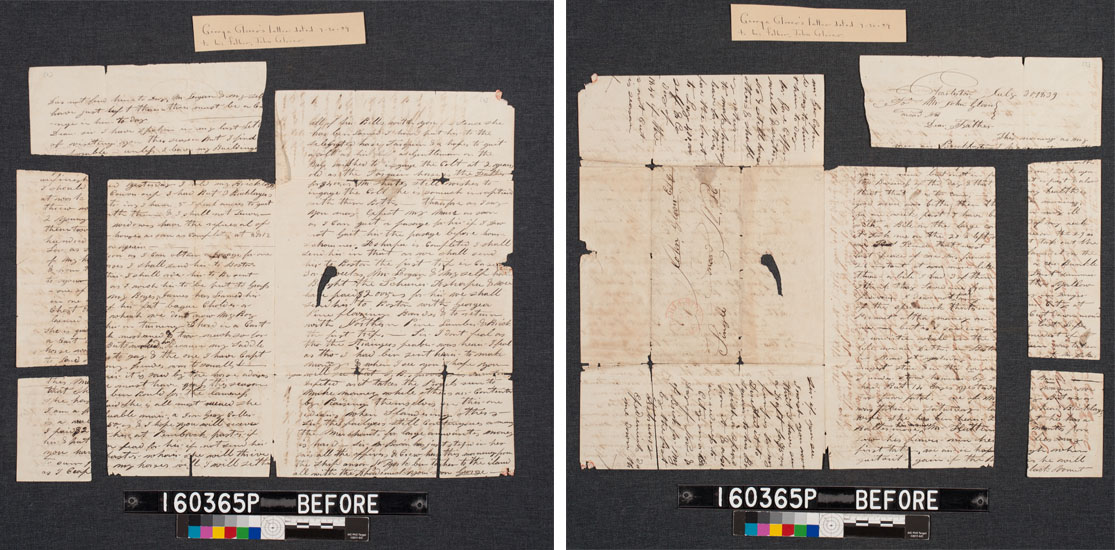From the Collections: Treatment for the Glover letter

Letter before treatment courtesy of NEDCC.
Click to view larger: Before 01 | Before 02
From time to time, an item in our collection is in such poor condition that we cannot permit access for research in its original form. Such items must undergo conservation treatment to ensure their long-term preservation.
George Washington Glover (1810-1844) was Mary Baker Eddy’s first husband. His letter to his father, John Glover, is an example of a document in need of conservation. We were reminded of its fragile state and poor condition when we posted the From the Collections article “The Business of the Day…,” in which it was featured. This letter was separated into several pieces and very brittle on the folds.
So this past winter we selected Glover’s letter to undergo treatment at the Northeast Document Conservation Center (NEDCC). We learned that the letter was written in iron gall ink, commonly used from the twelfth through the twentieth centuries. This ink was made from the iron salts and tannic acid found in galls, bark, leaves, and plant roots. In this case both components of the item—the base (paper) and the ink (iron gall)—were causing the letter’s deterioration, an example of what is called “inherent vice.” Iron present in the ink, as well as tannic acid, begin to corrode the paper, leaving damage and holes where the handwritten text was once found.
NEDCC conducted three treatments on this letter. First, the conservators stabilized the iron gall ink with a calcium phytate treatment. Because cellulose in the paper itself was also causing corrosion, a second treatment followed—alkalization through the application of calcium bicarbonate. These steps ensured a safe pH level for the iron gall ink and the paper, promoting a stable state. The third step was to mend the brittle paper with RK2 Japanese paper and wheat paste.
NEDCC’s conservation treatment stabilized this letter. The Library’s maintains its stable state, through archival storage. We keep a consistent environment in our stacks and house the item in materials that prevent the reintroduction of acids.

Click to view larger: After 01 | After 02
The Library is happy to have this letter back in our archive, where it will help us to fulfill a vital aspect of our mission—“to provide access to original materials.”
For additional reading on iron gall ink, visit the NEDCC website. For further reading on conservation work at the Library, see “Behind the Conservation of the Peace Flag.”

